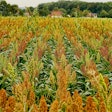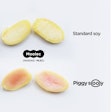
Overview
Soren Schroder, Bunge's Chief Executive Officer, commented, "While industry headwinds persisted through the end of the year, we made good progress in 2017 towards our strategic objectives by taking proactive steps to improve our cost structure and create a more balanced business.
“Fourth quarter oilseed margins did not recover as quickly as expected, and sugarcane milling results were negatively impacted by a sustained period of rain late in the quarter. Food & Ingredients finished the year on a strong note with Edible Oils closing out a near-record year. Looking ahead, we are seeing positive signs that soy processing conditions are improving, supporting our expectation that all segments will show year-over-year earnings growth in 2018. We expect a soft first quarter with improving conditions throughout the remainder of the year."
Schroder continued, “Our Global Competitiveness Program is off to a strong start, putting us on a good trajectory to achieve our $250 million target by the end of 2019. We also delivered $110 million of industrial cost savings in 2017, exceeding our target by $10 million. In addition, we continue to work toward the separation of our sugarcane milling business and are in the process of exiting from our global sugar trading activities and our renewable oils joint venture.
“We expect our acquisition of Loders Croklaan to close during the first quarter. Loders will greatly advance our strategy to expand downstream into higher margin products closely tied to our global oils and crushing footprint. This will accelerate our move to become the leading global B2B edible oils company."
Fourth Quarter Results
Agribusiness
Grains and Oilseeds results were lower than last year, as margins overall remained weak.
In Grains, results in North America were lower than expected, but higher than last year, primarily due to effective positioning, which helped overcome weaker structural margins and lower volumes due to increased exports out of South America. Lower origination results in South America were driven by the combination of weak margins and farmers’ delayed pricing of 2018 crops. Results in global grain trading & distribution were similar to last year; however, margins remained under pressure due to limited dislocation opportunities.
In Oilseeds, structural processing margins overall remained depressed during the quarter, primarily due to an oversupply of soymeal in destinations. Compared to last year, higher soy crushing results in Brazil were more than offset by lower crushing results in Europe, Argentina and Asia. However, conditions improved toward the end of the quarter as Argentine crushers reduced production, bringing global soymeal supply into better balance with demand. This is having a particularly positive impact on soy crush margins in Western Europe and Vietnam. In the U.S., structural margins were good and generally as expected, but slightly lower than last year. Softseed processing results were lower than last year as higher results in Canada were more than offset by lower results in Europe. Results in global oilseeds trading & distribution were similar to last year.
Read the rest of the report here.

















